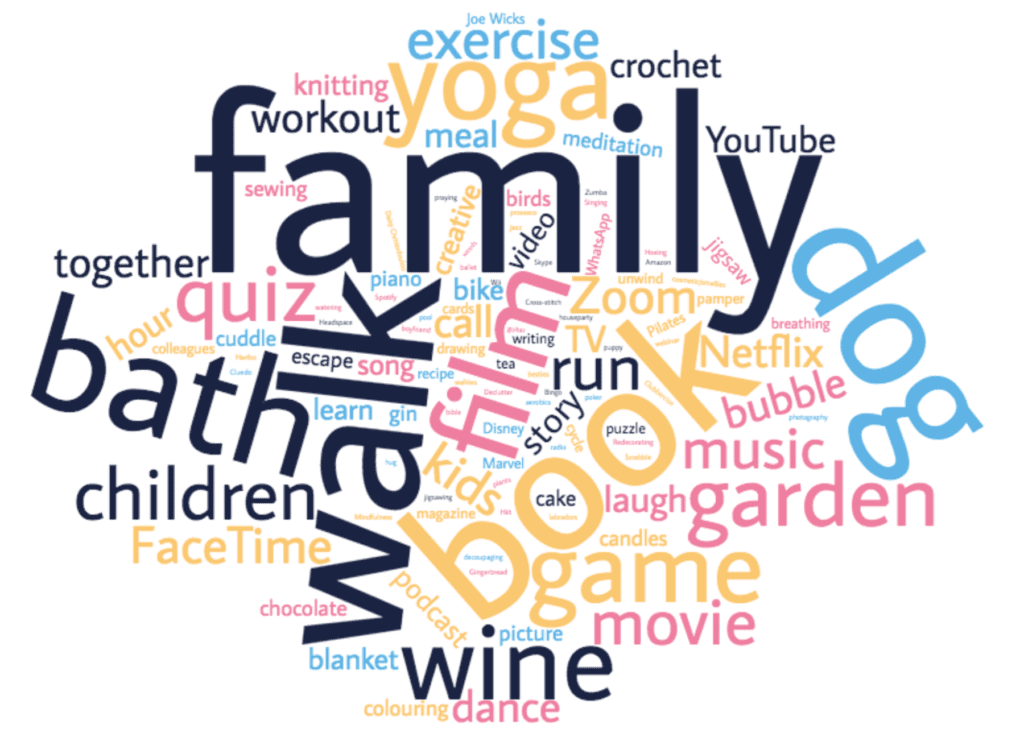
TeachTogether is a free service from the Chartered College of Teaching and The Behavioural Insights Team, which sends one text a week to support teachers’ wellbeing. You can find out more and sign up here. In one week’s message, we asked teachers to tell us one small thing they do to switch off in […]

Watch this 2 minute video about the potential of digital technology in education. Bukky O Yusuf is a Senior Leader in charge of Curriculum. In this video, Bukky talks about how technology can help pupils at home and in the classroom during this time. Take some time to reflect on their perspective. Share your […]

In this vlog, Farah Ahmed, Leverhulme Early Career Research Fellow at the Faculty of Education, University of Cambridge, founder and Director of Education at Islamic Shakhsiyah Foundation and Fellow and Council members of the Chartered College of Teaching, and Sufian Sadiq, Director of Teaching School for Chiltern Learning Trust, specialist in quality assurance, assessment and examination, […]

What’s the idea? Moving from the classroom to online learning presents new challenges, including in the assessment and feedback practices you use. Many of the principles of good feedback and assessment can still apply to the online environment, they just need to be reframed to fit this new context. Regardless of the setting, there are […]

What’s the idea? Moving from the classroom to online learning presents new challenges, including around assessment and feedback practices. Many of the principles of good feedback and assessment can still apply to the online environment, they just need to be reframed to fit this new context. Regardless of the setting, there are some key considerations […]

What’s the idea? Moving from the classroom to online learning presents new challenges, including around assessment and feedback practices. Many of the principles of good feedback and assessment can still apply to the online environment, they just need to be reframed to fit this new context. Hinge questions, for example, can be a great way […]

Moving from the classroom to online learning presents new challenges, including around assessment and feedback. Many of the principles of good feedback and assessment can still apply to the online environment, they just need to be reframed to fit this new context. Regardless of the setting, there are some key considerations around feedback that teachers […]

What’s the idea? Moving from the classroom to online learning presents new challenges, including around assessment and feedback. Many of the principles of good feedback and assessment can still apply to the online environment, they just need to be reframed to fit this new context. Regardless of the setting, there are some key considerations around […]

The second half of the Spring half term has always felt a bit manic. This half term, of course, has been unforgettably altered. I’ve never thought about teaching remotely before, and I’ve never considered how I’d do it – what are my first thoughts? ICT Heroes First, I have to pay tribute to the immense […]

Setting up an online reading group Online reading groups can be a good alternative to face-to-face meetings and while it might not be the same as meeting in the same room with some biscuits to share, they do come with their own advantages. Below we have compiled some suggestions on how to run an online […]

The last week has been a whirlwind of brainstorming, collaborating, and communicating, all in the effort to figure out how to move brick and mortar teachers into an eLearning environment smoothly and to create policies and procedures—that possibly didn’t exist ten days ago—to help support this effort. Some of our teachers have jumped into this […]

Three months down the road from when the novel Coronavirus first emerged, one of the biggest impacts on society, apart from public health, has been on education. The kickstarting of digital pedagogy on such a scale has never been possible before. The Chinese Government’s decision to offer virtual classes on a national scale was the […]

Quizzes and low-stakes assessments are not just good for providing teachers with information about how much a student knows and what they still need to learn to inform future planning – they can also help students take advantage of the benefits of ‘retrieval practice’, where recalling things from memory actually helps to strengthen retention of that […]

The idea behind ‘Five Ways to Wellbeing’ is that wellbeing can be achieved in different ways and these five evidence-based actions can help your students feel better. They are simple, free things to do and the aim is to prompt students to consider what they can do to improve their wellbeing, rather than focus on […]

Parental engagement with learning at home is a vital part of young people’s educational journeys. We’ve known this for more than 20 years, but now more than ever we need to support parents to support learning. ‘Parent’ here means any adult with a significant caring responsibility for the young person – it might be a […]

In small schools across the country, many children are taught in mixed-age classes. It is not uncommon to find four year groups being taught in one class, and sometimes the mixture of ages is even greater. While there is some evidence that this type of grouping benefits children’s pro-social behaviours (Lindström and Lindahl, 2011) this […]

I work for the Chartered College as a Research and Learning Specialist and I’m also a mum to three sons aged 1, 7 and 10. Up until last Autumn, I’d been a teacher and Assistant Headteacher in Primary schools for 15 years but I recently left my job in school to start a part-time PhD. […]


An understanding of the thinking processes that pupils go through is helpful, from planning lessons to delivery. Literacy tasks, by their very nature, demand focus. Therefore, a consideration of working memory capacity and cognitive load can help you to plan tasks with improved accessibility for all pupils. Retention and recall rely on understanding the information […]

What’s the idea? This compact guide is concerned with explicit teaching to support vocabulary development in learners. Essentially, we are looking at what steps we can take in order to expand the functional vocabulary that learners use in lessons (and life). We are looking to empower learners so that they can draw on a rich […]




















